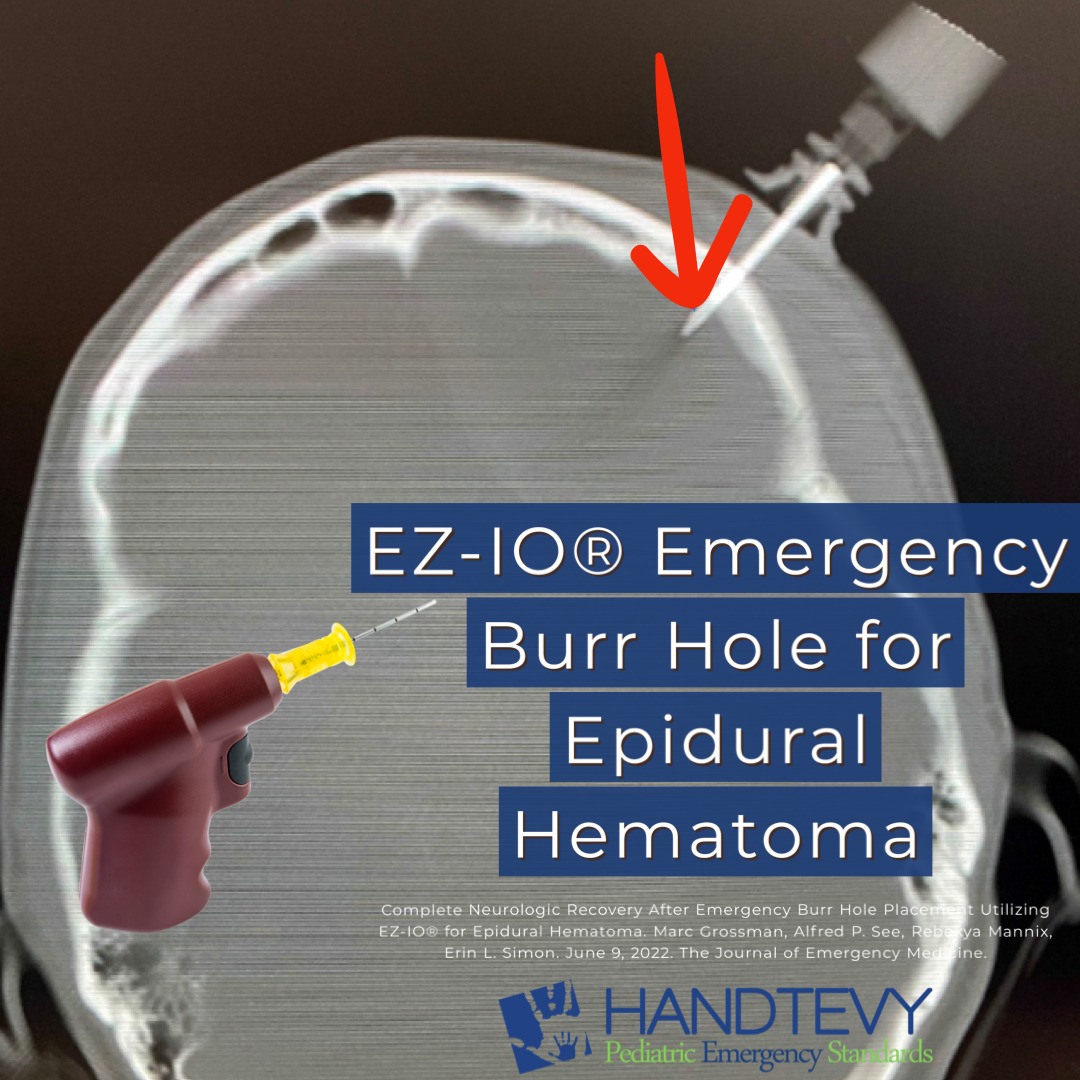EZ-IO® Emergency Burr Hole for Epidural Hematoma

ATTENTION: DO NOT TRY THIS AT HOME
What would do if you had a 17-year old with a post-traumatic epidural hematoma herniating right in front of you with the closest Trauma center an hour away?
A study published in The Journal of Emergency Medicine titled “Complete Neurologic Recovery After Emergency Burr Hole Placement Utilizing EZ-IO® for Epidural Hematoma” sheds light on an innovative approach to treat post-traumatic epidural hematoma (EDH) in emergency settings.
Background:
Post-traumatic EDH accounts for 1-3% of pediatric closed head injury admissions, with a 2.5:1 male predominance. Motor vehicle collisions are the primary cause of EDH in adolescents. EDH accompanies up to 4% of adult head injuries, leading to 10% mortality in adults and 5% mortality in children. The standard care in North America for post-traumatic EDH involves decompressive craniotomy or trepanation via a burr hole, typically performed in an operating room by neurosurgery teams.
Case Report:
The study discusses the case of a 17-year-old female who arrived at a community emergency department (ED) following a motor vehicle collision. Initially refusing emergency medical services, she was brought to the ED via a private vehicle. Her condition rapidly deteriorated, requiring intubation. Due to unavailability of neurosurgical services and weather-related transport delays, decompression and drainage of her EDH were achieved using an EZ-IO® drill and intraosseous needle, guided virtually by a pediatric neurosurgeon. The patient experienced a complete neurologic recovery.
Discussion:
Quick thinking ED physician Marc Grossman, MD decided to decompress and drain the epidural hematoma with an EZ-IO® drill and 25 mm intraosseous needle under virtual guidance of a pediatric neurosurgeon until definitive care could be obtained.
What are the key takeaways?
(1) ED physicians should be aware of this procedure in settings without access to neurosurgical services, and where ED access to or familiarity with burr hole equipment is limited.
(2) The EZ-IO® device may be a temporizing and lifesaving intervention until definitive neurosurgical care can be obtained.
For those of us who know Dr. Grossman personally, we know that he would do anything to benefit his patients (both in the hospital and in the field). In this case there is no doubt his plan (which he made along with the patient’s mother) was lifesaving. Kudos to you Dr. Grossman!
Read the study here:
Watch the video on YouTube:
Note: Use of the EZ-IO® for this procedure is considered off label.

Peter Antevy, MD
Source: Grossman, M., See, A.P., Mannix, R., & Simon, E.L. (2022). Complete Neurologic Recovery After Emergency Burr Hole Placement Utilizing EZ-IO® for Epidural Hematoma. The Journal of Emergency Medicine.
DISCLAIMER:Pediatric Emergency Standards Inc. does not make clinical or medical decisions. The Handtevy System is intended to be utilized as a guide only. Provider’s experience and training should be the final determinant of clinical treatment decisions.

